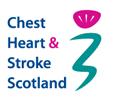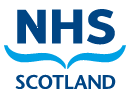A
- Active Cycle of Breathing Technique (ACBT)
- A method of chest clearance suitable for people with COPD
- Airways
- The system of tube-like passageways which allow air to get in and out of your lungs.
- Airway Clearance techniques
- Different types of breathing exercises that help you to get sputum out of your lungs. Airway clearance is usually taught by a respiratory physiotherapist or specialist nurse.
- Allergy
- A disorder in which the body becomes hyper-sensitive to particular antigens which can cause cell damage and inflammation.
- Alpha1 Antitrypsin Deficiency (A1AD / A1AT)
- Hereditary condition which can cause emphysema, liver disease and Lung infections.
- Alveoli
- Tiny air sacs in the lungs where oxygen is taken in and carbon dioxide is removed.
- Anticholinergics
- A group of bronchodilator drugs which help to decrease the amount of mucus and phlegm.
- Anticipatory Care Plan
- A written plan which outlines the care you wish to receive. It is used to support those living with a long term condition to plan for an eventual expected change in health or social status. They also include choices about health improvement and staying well.
- Antigen
- Any substance that the body regards as foreign or potentially dangerous.
- Anxiety
- A feeling of fear, worry and uneasiness. It can cause physical feelings such as nausea, stomach upset, dizziness, dry mouth and tension.
- Apnoea
- Medical term for stopping breathing.
- Asthma
- Common chest condition narrowed airways causing breathlessness and wheezing.
Asthma: a condition of the airways of the lung which is associated with coughing, feelings of breathlessness and chest tightness, all of which may be worse during the night.
- Asthma Action Plan
- An individual plan which gives you specific information about what to do if you show the early signs of an asthma attack.
- Asthma allergen
- A usually harmless substance which starts an immune response in the airway and lung. The body produces histamine which makes the airway and lungs become inflamed and swollen.
- Asthma trigger
- Anything you are not allergic to but which irritates the airways and starts off asthma symptoms.
- Atopy/Atopic
- A predisposition to become allergic or to develop allergic diseases such as asthma, hay fever or eczema.
- Autogenic Drainage
- Breathing exercise to loosen mucus from the small airways. This method uses breathing at different levels of the lung to clear mucous
Back to top ^
B
- Beta-agonists
-
A group of bronchodilator drugs which cause muscles in the airways to relax.
- Blood Gases (arterial blood sample)
-
A blood test used to monitor many chest conditions. Blood is taken from an artery instead of a vein.
- BMI (Body Mass Index)
-
A method of quantifying you body mass which relates weight to height.
- Breathing Control
-
A method to restore normal breathing after activity or during an episode of breathlessness.
- Breath Sounds
-
Sounds heard through a stethoscope as air moves in and out of the lungs.
- Bronchiectasis
-
Condition which widens the airways and produces excessive mucous.
- Bronchioles
-
The smaller airways located within the lungs branching off from the bronchi.
- Bronchitis
-
Inflammation of the airways. Acute bronchitis caused by viruses or bacteria and characterised coughing, production of mucopurulent sputum and narrowing of the bronchi. Chronic bronchitis is characterised by excessive mucus production which is frequently complicated by chest infections.
- Bronchodilators
-
Long or short-acting drugs that open up the airways. Bronchodilator: A medicine which opens the airways. This may be taken from an inhaler or by tablets.
- Bronchus
-
One of the large airways that branch of from the trachea and carry oxygen to the lungs. Trachea divides into the right and left bronchus.
- Buteyko Method
-
Breathing exercises to reduce the symptoms of breathing related health problems.
Back to top ^
C
- Capillaries
-
The smallest blood vessels and the site of gas exchange throughout the body.
- Carbon Dioxide
-
Waste product from the body’s energy making processes. It collects in the blood and is exhaled by the lungs.
- Chronic Obstructive Pulmonary Disease (COPD)
-
Umbrella term which includes chronic bronchitis, emphysema and chronic asthma.
- Cilia
-
Tiny hair-like projections in airways which move dust / debris to the throat to be coughed up or swallowed.
- Combination inhaler
-
Usually referring to the combination in the same inhaler of an inhaled steroid and a long acting airway opening medication
- Corticosteroids
-
Drugs used to treat inflammation.
- CT Scan (Computerised tomographic scan)
-
A special x-ray investigation which can be performed on any part of the body. The patient lies down on a special couch and a computer constructs slices of the body in great detail so that radiologists (doctors specialising in use of x-ray images) can look at the structure of parts of the body and see any disease affecting it.
- Cyanosis
-
A bluish discoloration of the skin caused by low level of oxygen in the blood.
Back to top ^
D
- Diaphragm
- The dome-shaped muscle that sits underneath the lungs separating them from the abdomen.
- DLco gas transfer test, (Diffusion in lungs using Carbon Monoxide)
- This test measures how the lung surface works and how well the oxygen you breathe in goes through to the blood.
- Dyspnoea
- Medical term for breathlessness.
Back to top ^
E
- Emphysema
- A lung condition in which large numbers of alveoli have been destroyed resulting in much less area for gas exchange to take place. Emphysema is one type or one part of COPD.
- End of life care
- Refers to the care given in the last few days of life.
- Exercise Spirometry
- A test of lung function which is done while you are exercising on a bike or treadmill.
- Expectorant
- A drug that helps to move and expel mucus.
Back to top ^
F
- FEV /FVC
- These abbreviations refer to two measurements which are made during the procedure of Spirometry. This is one form of lung function test which enables the doctors to determine whether there is any airway narrowing and to measure the size of the lungs.
- Forced Expiratory Volume in 1 second (FEV 1)
- This is the main measure used to identify any airway narrowing. It is measured in litres and compared to someone of the same age, height and sex.
- Forced Vital Capacity (FVC)
- This is a measure of the total volume of air blown out through a Spirometer. This is measured in litres and can be expressed as a percentage of the predicted value for someone of the same age, height and sex.
- Flu (Influenza)
- Virus that affects the respiratory system.
- Flu Vaccine
- Annual injection which reduces the chance of getting the flu. It is recommended for anyone with a chronic chest condition.
Back to top ^
G
- Gas Exchange
- The exchange of oxygen for carbon dioxide which takes place in the alveoli of the lungs.
Back to top ^
H
- Histamine/Methacholine Challenge Test
- A test to show how your lungs respond to irritation and exercise at the same time.
- Hyperventilation
- Excessively rapid or deep breathing. Fast respiratory rate (more than 25 – 30 times per minute) which alters the carbon dioxide levels in the blood.
- Hypoventilation
- Slow respiratory rate (less than 8 – 10 times per minute) which alters the carbon dioxide levels in the blood.
- Hypoxia
- Low level of oxygen in the blood.
Back to top ^
I
- Influenza vaccine (Flu)
- Injections given annually to reduce the risk of seasonal viral illness which can be have serious complications for people with lung conditions
- Inhalers
- Also known as ‘puffers’, inhalers allow drugs to be delivered directly to your lungs. The 3 main groups of inhalers used for chest conditions are: Relievers, Long-acting relievers and Preventers.
- Intercostal Muscles
- Located between each of the ribs, allow the chest to expand and contract.
Back to top ^
L
- Long Acting Beta Agonists (LABA)
- A reliever medication
- Long Term Oxygen Therapy (LTOT)
- Available on prescription for some lung conditions.
- Lungs
- Two air-filled organs in the chest which remove carbon dioxide and bring oxygen to the blood.
- Lung Volumes Test
- This test measures the total size of the lungs including the areas inside the lung
Back to top ^
M
- MRI Scan
- A type of scan which uses magnetism to create a picture of the body internally
- Mucus
- Sticky airway secretions produced by glands in the airways to trap foreign debris.
Back to top ^
N
- Nasal Continuous Positive Airway Pressure (NCPAP)
- Used for severe sleep apnoea, pressurised air is delivered, through the nose, to prevent airway obstruction.
- Nebuliser
- A machine driven by an electrically powered compressor that drives air into a chamber holding a liquid form of medication. It produces a mist that is then breathed into the lungs
Back to top ^
O
- Occupational asthma
- Variable asthma with symptoms linked to an irritant found in the work environment but not to causes outside the workplace or at home.
- Occupational Lung Disease
- Disease of the lung including some cancers which are known to have been caused by exposure to certain substances whilst at work.
- Oscillatory Positive Expiratory Pressure
- A device used to assist in loosening mucous. It can be used on its own, or at the same time as other breathing exercises such as Autogenic Drainage.
- Oxygen
- A gas from the air which the body requires in order to function.
- Oxygen Concentrator
- An electrical device that produces a flow of 90% Oxygen from normal air (which is 23%).
- Oxygen Therapy
- Available on prescription for some chest conditions.
Back to top ^
P
- Palliative care
- The phase of an illness is when the focus of care turns to the control of your symptoms and quality of life.
- Peak Flow
- A measurement of how fast you can blow air out of your lungs
- Phlegm
- A non-medical term for sputum.
- Pleura
- Thin lining of the lungs which has two layers with fluid between them for lubrication.
- Pneumococcal vaccine
- Injection given to reduce the risk of pneumonia which can be have serious complications for people with lung conditions.
- Pneumonia
- A bacterial infection in the lungs.
- Positive Expiratory Pressure
- Techniques involve the use of devices to assist in loosening mucous. They can be used on their own, or at the same time as other breathing exercises such as Autogenic Drainage.
- Power of attorney
- A legal document which is usually made while you are well to inform others who you wish to attend to your welfare or financial arrangements if at some time in the future you are unable to do this for yourself.
- Pulmonary
- Relating to, associated with, or affecting lungs.
- Pulmonary Function Tests (PFTs)
- Detailed assessment of the lung function.
- Pulmonary Rehabilitation
- Structured programme of exercise and education for people with chronic chest conditions, e.g. COPD.
Back to top ^
R
- Respiratory
- Medical term for all things to do with breathing.
- Respiratory Rate
- The number of breaths per minute; on average between 12 – 20. Rate increases during exercise, excitement, pain and fever. Respiration rate decreases during relaxation and sleep.
Back to top ^
S
- Sleep Apnoea
- Apnoea that occurs overnight. Caused by a collapse of the airway behind the tongue. Snoring can indicate that there are problems with breathing at night causing collapse of the airway behind the tongue. This can cause you to stop breathing hundreds of times overnight. When this happens repetitively, sleep is disrupted and people often wake feeling un-refreshed and can feel sleepy in the daytime. Overweight people with large necks are most at risk.
- Smoking Cessation
- A variety of methods and advice proven to help you to stop smoking.
- Spacer
- Plastic dome with a mouthpiece at one end and a fitting for an Inhaler at the other. Makes Inhaler easier and more effective to use.
- Spirometry
- A test which assesses how well you actually breathe. The amount of air inhaled and exhaled is measured by breathing into a mouthpiece.
- Sputum
- Medical term for mucus or phlegm.
- Steroids
- Abbreviation for Corticosteroids. These are medicines used to treat many diseases caused by chronic inflammation.
Back to top ^
T
- Trachea
- Large airway that connects the larynx (‘voice box’) to the bronchi. Also called the ‘windpipe’.
- Traffic Light System
- A method of recognising the warning signs of infection to reduce the impact before an infection can take hold.
Back to top ^
V
- Ventilation
- The exchange of air between the Lungs and the atmosphere allowing oxygen to be exchanged for carbon dioxide in the alveoli.
Back to top ^
W
- Wheeze
- Whistling sound caused by a narrowing in the airways.
- Work aggravated asthma
- Pre-existing asthma worsened by normally harmless irritants or physical effort in the work place.
Back to top ^





